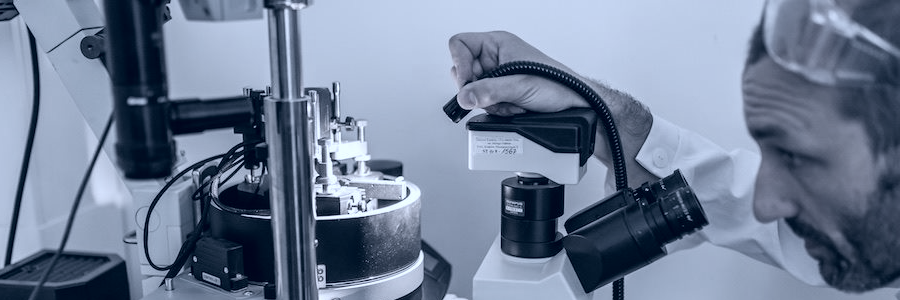
Nano and microscale systems
Tematyka badawcza
Research interests
The main research directions of the group of Systems in Nano and Microscale are focused on biomaterials. We study the biomaterials based on polymers, both of synthetic and natural origin, as well as their potential use in medicine, pharmacology and environment. Understanding the physicochemical properties of macromolecules, complexes and multilayer films with incorporated metallic, oxide or lipid nanoparticles enables the production of new materials with interesting properties, scientifically intriguing, used in scientific research, and characterized by the wide spectrum of applications. We use modern research techniques and various equipment to perform these tasks. The experimental results are interpreted theoretically using numerical calculations (Monte Carlo method, molecular dynamics (MD)), coarse-grained modeling or finite element method (FEM)). Our research is based on the motto: “From a single molecule to an intelligent material”.
Main research topics
- Physicochemical characteristics of macromolecules of synthetic and natural origin, in particular: polypeptides, polysaccharides and proteins (with emphasis on specific proteins: fibroblast growth factors and neurotrophins) in aqueous solutions under physiological conditions and in culture media.
- Physicochemical characteristics of layers obtained in the self-assembly processes of particles/macromolecules at the solid/liquid interface.
- Determination of the adsorption mechanisms of macromolecules and particles at solid substrates with particular emphasis on short- and long-range interactions.
- Transport in dispersed systems: theoretical and experimental evaluation of the reversibility of the adsorption processes of particles at the solid/liquid interface.
- Structural and topological studies of model surfaces as well as monolayers and multilayers of various compositions (multilayers of macromolecules, multilayers of nanoparticles, multilayers of macromolecules with incorporated nanoparticles, etc.).
- Application of Monte Carlo calculations to determine the mechanisms of adsorption/desorption of particles and macromolecules on/from the solid/liquid interfaces. Determination of the conformation of particles and biomolecules and the nature of their interactions with substrate surfaces.
- Application of the MD (molecular dynamics) calculations for determining of physicochemical properties of macromolecules in solutions.
- Mechanics of biological systems in the nano- and micrometer scale.
Methodology
- Dynamic light scattering (DLS), laser diffraction: determination of size of particles and macromolecules in solvents of various polarity.
- Electrophoresis with Doppler laser anemometry: determination of the zeta potential of particles/macromolecules dispersed in solvents of different polarities based on electrophoretic mobility measurements.
- Streaming potential measurements: a unique method to determine the charge (zeta potential) of bare macroscopic surfaces (mica, silicon/silica, etc.) and surfaces coated with thin films (monolayers and multilayers).
- Viscosimetry: measurements of kinematic and dynamic viscosity of solvents and suspensions.
- Densitometry: measurements of the density of colloidal suspensions.
- UV-Vis spectroscopy: quantitative determination of diverse analytes, evaluation of the rate of chemical eaction, determining the size and shape of nanparticles as well as aggregation processes (stability of colloidal systems). Determining the concentration of proteins and studies on their aggregation processes.
- Gravimetric method: quartz crystal microbalance with energy dissipation monitoring (QCM-D): determination of kinetics adsorption of biomolecules and nanoparticles.
- Fluorescence techniques: fluorescence microscopy, modular multimode microplate reader.
- Optical microscopy: mechanisms of nanoparticle depositions and their interactions with surfaces and among themselves.
- Atomic force microscopy AFM: mechanisms of nanoparticle depositions and their interactions with surfaces and among themselves, energy profiles and surface roughness.
- Molecular dynamics modelling (MD): behavior of proteins and other biomolecules in full atomic detail and at very fine temporal resolution.
- Theoretical description of physicochemical processes based on Monte Carlo simulations, large-scale modeling, “stiff” differential equations.
- Finite element method.